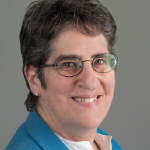Dr. Solomon cautions potential authors to avoid predatory journals that require huge fees, provide no peer reviews and have a limited readership. Often, these journals are not credible and not worth the fees. But there are many reputable journals out there.
After getting the results of a study, researchers often have too much data to publish, Dr. Hausmann says. It can be a challenge to decide what to include in the paper.
“I fundamentally think about every scientific paper as a story. Successful papers are clear stories with a beginning, middle and end. There should be some drama associated with every paper,” Dr. Solomon says. “That’s often the hardest part of writing a paper for someone early in their career—how to formulate the story.”
When trainees come in with tables of data, Dr. Solomon asks them what they would share with friends or family about the research. This approach helps determine what the data’s important message is and how to deliver it in a simple, clear manner.
Tables and figures help demonstrate the plot of the story and give juicy details. The discussion allows the author to describe the implications, strengths and limitations.
Rejections
Dr. Solomon discussed some of the steps for the journal review process most papers go through. This process is when editors and external peer reviewers look closely at the science and the writing.
“It might be great data and an important increment—but if the writing’s bad, [the paper] may get rejected,” he says.
If a paper is rejected, Dr. Solomon says he first lets his bruised ego heal. Then, he takes a look at the comments to better understand the critiques. Did the reviewers find the topic or data compelling? Were the analyses and writing confusing, or were there methodologic limitations that could not be managed? As he tries to understand their feedback, he thinks about the next target journal and how to improve the paper.
Dr. Solomon suggests to only sparingly attempt to rebut a rejection because it’s rarely a productive experience. He has done it once in his career.
It’s easy to lose steam on a paper after it’s been rejected once or twice, but Dr. Solomon encourages authors to carry on. “I say, ‘Look, you spent the time, no matter what the reviewer thought, it’s worth getting it published. Let’s consider what the reviewers did not like, shape it up and get it out [for another] review,’” he says. “It’s a matter of finding the right audience and the right journal and listening carefully to the critiques of reviewers.”



